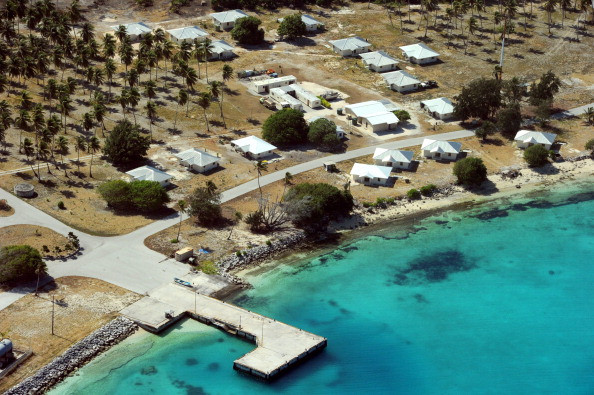Radiation levels on Bikini Island higher than expected 60 years after US nuclear tests

Background gamma radiations are higher than previously thought on Bikini Island, 60 years after the end of the US nuclear testing programme. The consequences on the environment and the challenges of repopulating the area remain important, scientists said.
While contamination levels in the northern Marshall Islands use measurements made decades ago to project present radiation levels, a study in the American Proceedings of the National Academy of Sciences (PNAS) focused on getting new measurements of radiation levels on the different atolls.
Amid debates to re-establish human settlements on the Bikini and Rongelap islands, the scientists aimed to provide concrete and timely data to fuel the discussion.
Sixty-seven nuclear tests
Between 1948 and 1958, 67 nuclear weapons tests were conducted by the US government in the northern Marshall Islands, which resulted in severe radioactive contamination.
Previous studies have characterised the background radiation levels of the land, water, and food that remained, based on old measurements and knowledge about the half-life of Caesium 137, the major source of gamma radiation.
This new study measures background gamma-ray radiation in the contaminated islands using gamma-ray detectors .
The scientists compared the results with control samples from Central Park in New York and from the Majuro Atoll in the southern Marshall Islands - an island which received little radioactive material during the tests.
They found out that on four islands - Bikini, Namu, Runit, and Rongelap - mean external gamma radiation values were well above the levels measured in the control locations . The measurements were also higher than the ones predicted by previous scientific studies which were based on Caesium 137 quantity projections.
A case for resettlement
Before 1948, inhabitants of Bikini and Rongelap atolls had been evacuated to more distant locations so that they would not be impacted by the tests. In the years that followed, decisions to resettle the islands were hastily taken, threatening people's safety.
The premature resettlement of Rongelap in 1957, and Bikini in 1968, led to large populations being moved back, even though radiation levels were still well above standards for safe exposure limits. They were moved again away from the islands when radiation levels showed no signs of being reduced, leading to adverse effects on their health. Today, both Rongelap and Bikini are almost free of any human presence.
To be safe for habitation and resettlement, the maximally exposed person should not receive a cumulative effective dose greater than 1 mSv/y above background, according to standards agreed upon by the United States and the Republic of the Marshall Islands (RMI) governments.
The new measurements suggest Rongelap fits this criteria, but not Bikini, where external gamma radiation levels significantly exceed this standard. The scientists recommend conducting further research before coming to a decision about repopulating the two islands, and in particular to assess radiation exposure through additional pathways, such as food ingestion.
© Copyright IBTimes 2025. All rights reserved.






















